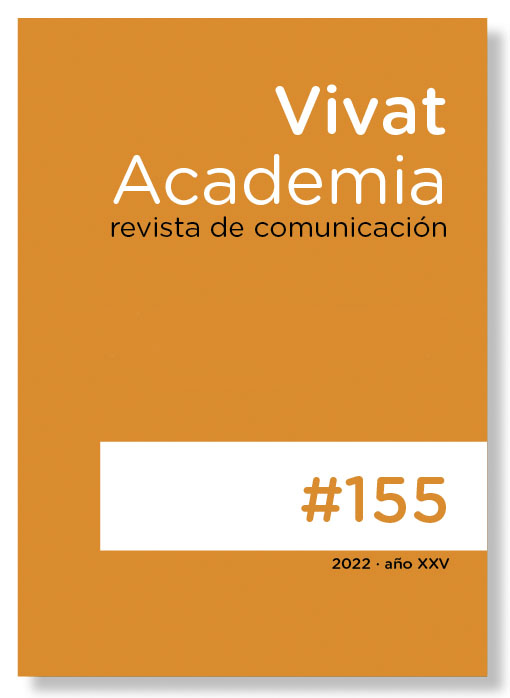An exploratory study on the impact of neuromarketing on virtual learning environments
Main Article Content
Abstract
Neuromarketing is an essential topic in the current technological world, and it has experienced explosive growth in the last years as a tool for communication. Nowadays, neuromarketing subjects have greatly improved when classroom teaching is supported by adequate laboratory courses and experiments, following the ‘learning by doing’ paradigm, which provides students with a deeper understanding of theoretical lessons. However, many postgraduate programs do not teach their students about the use and applications of neuromarketing. It is believed that developments in neuromarketing will likely change the traditional practices in the classroom. The objective of this paper is to propose a mix of consumer-based technologies to develop a neuromarketing project into a laboratory activity. These technologies can make neuromarketing more appealing to students by enhancing the attractiveness of business administration curricula. This neuromarketing exploration project has been evaluated successfully based on the results and responses to questionnaires: students and experts rated the neuromarketing laboratory activity highly. Students found the laboratory activity learning in the neuromarketing exploration project to be very good or excellent. Moreover, the students obtained good academic outcomes. Within the specific context of a virtual private university, this work was oriented to design a neuromarketing workshop to develop certain generic competencies for improving educational processes at universities. The findings of this research will be relevant in decisions of educational policy, but also on the pedagogical theory and practice in the scope of this study.
Downloads
Article Details

This work is licensed under a Creative Commons Attribution-NonCommercial-ShareAlike 4.0 International License.
References
Asrar-ul-Haq, M., Anwar, S. y Hassan, M. (2017). Impact of emotional intelligence on teacher׳s performance in higher education institutions of Pakistan. Future Business Journal, 3(2), 87-97; http://dx.doi.org/10.1016/j.fbj.2017.05.003
Avinash, T., Dikshant, L. y Seema, S. (2018). Methods of Neuromarketing and Implication of the Frontal Theta Asymmetry induced due to musical stimulus as choice modeling. Procedia Computer Science, 132, 55-67, https://doi.org/10.1016/j.procs.2018.05.059
Blömeke, S. y Olsen, R. V. (2019). Consistency of results regarding teacher effects across subjects, school levels, outcomes and countries. Teaching and Teacher Education, 77, 170-182. https://doi.org/10.1016/j.tate.2018.09.018
Casado-Aranda, L-A., Dimoka, A. y Sánchez-Fernández, J. (2019). Consumer Processing of Online Trust Signals: A Neuroimaging Study. Journal of Interactive Marketing, 47, 159-180. https://doi.org/10.1016/j.intmar.2019.02.006
Cerdá, L. M. (2016). Happiness in teaching: positive emotions for evaluating the relationship between leadership style and performance of the professor in the classroom. En Proceedings of 10th annual International Technology, Education and Development Conference INTED 2016. Valencia, March, 1396-1405.
Chen, J. (2016). Understanding teacher emotions: The development of a teacher emotion inventory. Teaching and Teacher Education, 55, 68–77.
Chihiro Watanabe, C., Naveed, K. y Neittaanmäki, P. (2017). Co-evolution between trust in teachers and higher education toward digitally-rich learning environments. 48, 70-96https://doi.org:10.1016/j.techsoc.2016.11.001.
Dirican, C. (2015). The Impacts of Robotics, Artificial Intelligence on Business and Economics. Procedia - Social and Behavioral Sciences, 195, 564-573; https://doi.org/10.1016/j.sbspro.2015.06.134
Folwarczny, M., Pawar, S., Sigurdsson, V. y Fagerstrøm, A. (2019). Using neuro-IS/consumer neuroscience tools to study healthy food choices: a review. Procedia Computer Science, 164, 532-537. https://doi.org/10.1016/j.procs.2019.12.216
Golnar-Nik, P., Farashi, S. y Safari, M.-S. (2019). The application of EEG power for the prediction and interpretation of consumer decision-making: A neuromarketing study. Physiology & Behavior 207, 90-98 https://doi.org/10.1016/j.physbeh.2019.04.025
Granziera, H. y Perera. H. N. (2019). Relations among teachers’ self-efficacy beliefs, engagement, and work satisfaction: A social cognitive view. Contemporary Educational Psychology, 58, 75-84. http://dx.doi.org/10.1016/j.cedpsych.2019.02.003
Gutiérrez, G. (2019). Neuromarketing as an effective tool for education in sales and advertising. Revista Latina de Comunicación Social, 74, 1173-1189. https:// dx.doi.org/10.4185/RLCS-2019-1377
Jang, H.-R. (2019). Teachers' intrinsic vs. extrinsic instructional goals predict their classroom motivating styles. Learning and Instruction, 60, 286-300; https://doi.org/10.1016/j.learninstruc.2017.11.001
Kaklauskas, A., Abraham, A., Dzemyda, G., Raslanas, S., Seniut, M., Ubarte, I., Kurasova, O., Binkyte-Veliene, A. y Cerkauskas, J. (2020). Emotional, affective and biometrical states analytics of a built environment. Engineering Applications of Artificial Intelligence. 91, 103621. https://doi.org/10.1016/j.engappai.2020.103621
Karakus, O., Howard-Jones, P. A. y Jay, T. (2015). Primary and Secondary School Teachers’ Knowledge and Misconceptions about the Brain in Turkey. Procedia - Social and Behavioral Sciences, 174, 1933-1940. https://doi.org/10.1016/j.sbspro.2015.01.858
Luiz, I., Annukka Kim Lindell, A. K. y Ekuni, R. (2020). Neurophilia is stronger for educators than students in Brazil. Trends in Neuroscience and Education, 20, 100136. https://doi.org/10.1016/j.tine.2020.100136
Mañas-Viniegra, L., Núñez-Gómez, P. y Tur-Viñes, V. (2020). Neuromarketing as a strategic tool for predicting how Instagramers have an influence on the personal identity of adolescents and young people in Spain. Heliyon, 6, (3), e03578. https://doi:10.1016/j.heliyon.2020.e03578
Moghadam, S. M. y Seyyedsalehi, S. A. (2018). Nonlinear analysis and synthesis of video images using deep dynamic bottleneck neural networks for face recognition. Neural Networks, 105, 304-315. https://doi.org/10.1016/j.neunet.2018.05.016
Nussbaum, P. A., Herrera, A., Joshi, R. y Hargraves, R. (2012). Analysis of Viewer EEG Data to Determine Categorization of Short Video Clip. Procedia Computer Science, 158-163. http://doi.org:10.1016/j.procs.2012.09.047
Papanastasiou, G., Drigas, A., Skianis, C. y Lytras, M. (2020). Brain computer interface based applications for training and rehabilitation of students with neurodevelopmental disorders. A literature review. Heliyon, 6(9), e04250; https://doi.org/10.1016/j.heliyon.2020.e04250
Salehzadeh, A., Calitz, A. P. y Greyling, J. (2020). Human activity recognition using deep electroencephalography learning. Biomedical Signal Processing and Control, 62, 102094; https://doi.org/10.1016/j.bspc.2020.102094
Seligman, M., Ernstb, R., Gillhamc, J., Reivicha, K y Linkins, M. (2009). Positive education: positive psychology and classroom interventions. Oxford Review of Education, 35(3), 293-311. https://doi.org/10.1080/03054980902934563
Siddiqui, N., Gorard, S. y See, B. H. (2019). Can learning beyond the classroom impact on social responsibility and academic attainment? An evaluation of the Children’s University youth social action programme. Studies in Educational Evaluation, 61, 74-82. http://doi.org:10.1016/j.stueduc.2019.03.004
Tshewang, R., Chandra, V. y Yeh, A. (2016). Students’ and teachers’ perceptions of classroom learning environment in Bhutanese eighth-grade mathematics classes. Learning Environments Research, 1(1), 1-20. https://doi.org/10.1007/s10984-016-9225-6
Wang, C.-C. y Hsu, M.-C. (2014). An exploratory study using inexpensive electroencephalography (EEG) to understand flow experience in computer-based instruction. Information & Management, 51(7), 912-923. https://doi.org/10.1016/j.im.2014.05.010
Zhang, J., Yin, Z., Chen, P. y Nichele, S. (2020). Emotion recognition using multi-modal data and machine learning techniques: A tutorial and review. Information Fusion, 59, 103-126. https://doi.org:10.1016/j.inffus.2020.01.011





